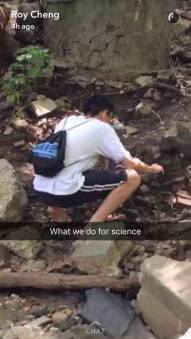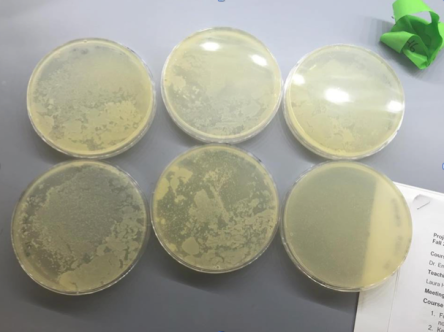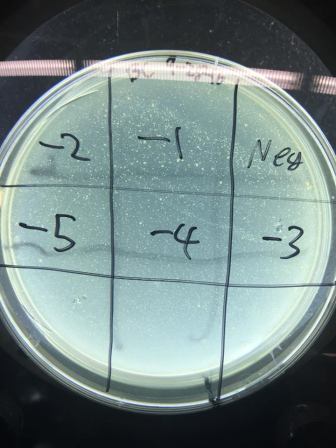I jumped out of my chair when i received a notification from blackboard saying I got off the waitlist for Phage Hunting. By then I had already given up hope of getting in, yet here I was.
A week later, I received yet another notification; we received our first assignment: collect dirt. Eagerly, I found my friends Roy and Jake, and we decided to go to the polluted river near Hampden in hopes of getting many phages. We collected dirt into our conical 50mL tubes, and excitingly joked about how we would discover mutated versions of phages.

On the first day of lab, I quickly performed asceptic technique on our bench and religiously followed lab procedures to ensure that I do not mess up. I tried my best to avoid any contamination by staying close (too close) to the fire. Sadly, a couple of days later, I discovered that my first plaque assay yielded no plaques. 
I immediately tried again, and yet no phage samples were yielded. So…. I began to think. Maybe it was because my environmental sample did not include phages? I proceeded to attempt to solve this problem by collecting a new environmental sample from the back of the UTL lab. I also tried the method of enriched isolation- yielded a more concentrated solution of phages. After, I tried serial dilutions and plated my solutions, and even made a spot test. Sadly, there were no plaques yielded.
Spot Test:

I began to wonder. “It probably wasn’t my samples. I tried my best to not contaminate anything. Could it be the materials I used?” I observed from my many plaque assays that the agar was broken up. I also observed that each assay was significantly different from each other, so I thought to myself “It must be from 1) the agar 2) my process in making the enriched isolation.”
So now, a month into the class, I’m back to doing enriched isolations. I admit, it does feel very disappointing not seeing any phages. However, at the same time, it’s also extremely fun to pursue and try to isolate what went wrong. I may not be there (discovering a phage) yet, but surely, I’ll get there- as many trials (smart trials) as it takes.
*advice for future hunters*
You should always take pictures of your plaque samples “UNDER” the light apparatus for it to show up better. Also, be thoughtful of what could have happened (errors) as you do the experiment.